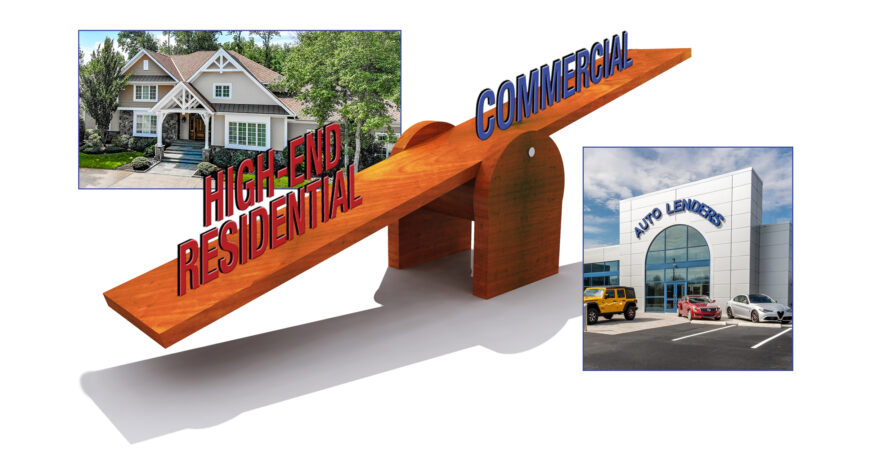When referring to the state of the construction industry, some forecasters lump the industry’s various sectors into one category to make their determinations. However, if you separate commercial construction and high-end residential, you’ll get a glimpse of a strange phenomenon. Typically, when one is on the rise, the other is on the decline — hence the seesaw effect. This inverse relationship between commercial and high-end residential construction is caused by several factors. So, what does this activity mean and how is it affecting the construction industry this year?
Commercial Construction Reflects the Market
Commercial construction often mirrors what is happening in the economy. If a recession is predicted or even threatened or if inflation is high, businesses usually cut back on spending. Investors always keep an eye on the market for this reason. If spending is on hold, plans for new retail locations, office spaces, and industrial parks usually get sidelined, which results in fewer commercial construction projects in the pipeline.
Custom Residential Builds Carry On
While commercial construction suffers during economic downturns, the high-end residential market often comes to the rescue for diversified construction companies. Wealthy individuals and families, who remain relatively unaffected by economic fluctuations, continue to seek out custom builds and luxurious living spaces. This demand for high-end residences keeps the construction industry afloat during economic decline.
A Timely Investment
As high-end residential properties are considered stable and value-increasing investments, it’s a strategic move those with wealth make during an economic downturn, when property values and homeowner demand tends to decrease. Buyers know that sellers will be more likely to negotiate to keep activity flowing during the slump. The funds from these timely investments fuels the growth of the high-end residential construction sector, creating a counterbalance to the slowdown in commercial projects.
Lifestyle and Societal Trends
Societal trends have a great effect on the construction and real estate markets. Luxurious preferences and personalization fuel the demand for high-end residential developments in urbanized areas. Lasting style, earth-friendly designs, and smart home technology are at the top of the most important list for luxury homes. Designated wellness spaces on property are also trending.
Construction Ongoing
The ups and downs of commercial and high-end residential construction reflect the complex interplay between the economy, investor behavior, and societal trends. While one sector may experience a temporary slowdown, the other rises to prominence, resulting in ongoing activity within the industry.
What does this mean for construction companies in our area?
According to the Associated General Contractors of America, the outlook for 2024 is mixed but still remains positive. Its 2024 Construction Hiring and Business Outlook survey revealed that contractors are optimistic but maybe less so than last year. If interest rates remain high, many of the 1,300 respondents expressed concern that commercial construction of offices, retail locations, and the like will take a hit. On the industrial spectrum of commercial construction, predictors say manufacturing facilities, warehouses, health care, and data centers could see more productivity.
At DeSimone, we take the seesaw effect into consideration and view the current economic conditions as a greater high-end residential opportunity. We recognize the need to pivot in order to thrive. Because our industry is so closely tied to the economy, it’s important for us to stay on top of construction news and it’s vital that we remain flexible, diversified, and active in the various construction sectors.

